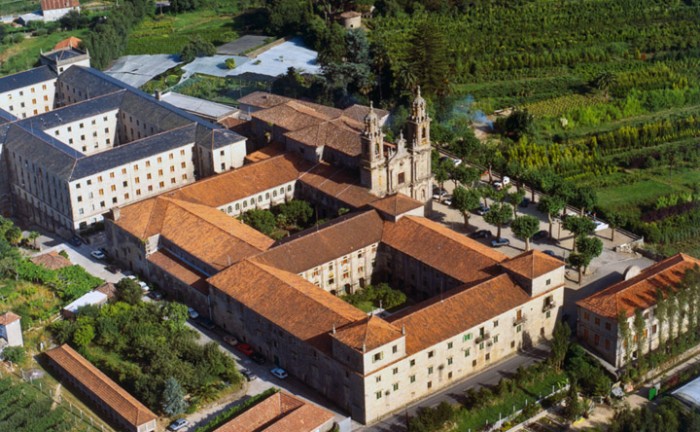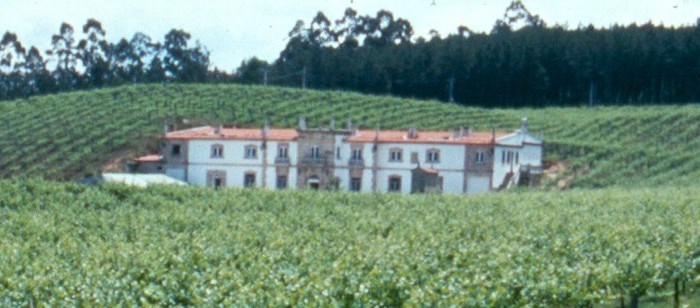Pontevedra walking tour: In the heart of the Rías Baixas, the city of Pontevedra was born in Roman times on the banks of the river Lérez, but reached its splendour at the beginning of the Renaissance with the discovery of America, as Pontevedra played an important role. Its rich history is reflected in an important artistic heritage that deserves to be discovered. During the tour, we will visit the monument to the heroes of Pontesampaio, which recalls the Napoleonic wars, the archaeological ruins of San Domingos , the church of La Peregrina and its curious shell shape, an obligatory passage for pilgrims making...
see more
Panoramic Drive: Along its coastline the mild temperaturas predominating for most of the year and its territory is tus broken up into extensive treecovered and beaches. La Toja is a natural pine covered island transformed in an important & luxurious tourist complex. Cambados is a old fishing village with the ruins of Santa María Dozo, San Benito Church & Fefiñanes Palace. Winegrowing is also important, Albariño surely being one of the finest white wines in the world. Combarro a picturesque town full of granaries and houses almost hanging over the sea. Optional: cruise along the Arousa or Pontevedra estuary with mussels and wine tasting. This catamaran ride will allow us to know the production...
see more
Baiona is a picturesque village with old narrow streets and important monuments such as the Church of Santa Liberata or the Collegiate Church of Santa Maria, although its main attraction is the ancient fortress of Monterreal-Conde de Gondomar. In 1493 the first news about the discovery of America reached Baiona. Today we can see the replica of the Pinta caravel in the port. Optional: visit inside the Pinta caravel and the fortress of Moterreal (check prices and schedules).
see more
Quiñones de León Gardens and Manor House The Pazo Quiñones de León is situated in a estate of more than 20 hectares whose origins date back to an ancient fortress from the 15th century The gardens, declared Historic Landmark in 1955, present the typology of the English garden, called “the Tea Meadow” and the French one, inspired by the Descartes´ Rationalism. Between the most outstanding specimens are the box trees, the Tulip tree from Virginia, or the monumental eucalyptus. Soutomaior Castle Gardens A castle-fortress of medieval origin, its garden has been named an “International Garden of Excellence”. With its millenarian...
see more
In the Salnés Peninsula is cultivated with great care and dedication the vineyard from which we obtain one of the most renowned wines in Galicia, the “Albariño”. On the shores of the Arousa and Pontevedra Bays grow the “albariña” grapes; this singularity contributes to the characteristic saline hints of the wine D.O. Rías Baixas. Cambados is the old fishing village: the ruins of Santa María Dozo, San Benito Church & Fefiñanes Palace. Winegrowing is also important, Albariño surely being one of the finest white wines in the world. Optional: visit and tasting in an Albariño winery.
see more
Santiago de Compostela is a UNESCO World Heritage Site as well as a pilgrim city and its historical center is full of dazzling monuments, most of them in a grand or monumental scale . This walking tour will lead you through an extraordinary ensemble of distinguished monuments grouped around the tomb of St James the Greater, including charming chapels, magnificent monasteries or splendid urban palaces. With its meandering medieval street plan and aging buildings there is the impression of timelessness in Santiago, each stone reflects the history of the city in perfect harmony. This magical city boasts a wealth of...
see more
A Coruña is one of Galicia´s largest cities that has grown up around a natural harbour along the Maritime Avenue from where the emblematic glass fronted buildings that give the town its nickname of “Crystal city” can be admired. This tour will give you the perfect opportunity to discover some of the best famous local landmarks in A Coruña, taking a sightseeing tour which includes passing by San Anton Castle originally built in the 16th century, the Hercules Tower, the only working Roman lighthouse in the world (s. II A.C.) & UNESCO World Heritage Site , the Domus or House of Mandkind (work of...
see more
The Pilgrims Way to Santiago was declared World Heritage by the UNESCO in 1993. Countless people have gone to Compostela in pilgrimage, since St. James tomb was discovered in the 9th century by Teodomiro, the Iria Flavia´s Bishop.
see more
“Pazo” de Santa Cruz de Ribadulla The founding of this “Pazo” (manor house) dates back to the 16th century and nowadays stands out as one of the best botanical gardens in Europe, with its magnificent camellias, gardenias, rhododendrons, azaleas ,… Other highlights include the “Walk of Olives Trees” probably from the fifteenth century, impressive century-old magnolias, the avenue of ancient box trees, a watermill, a beautiful waterfall and a chapel. “Pazo” de Oca This National Historic Landmark, built in the 17th and 18th centuries, has a battlement tower ornamented with heraldic symbols, a baroque chapel, impressive ponds and magnificent gardens...
see more
Panoramic Drive: Along its coastline the mild temperaturas predominating for most of the year and its territory is tus broken up into extensive treecovered and beaches. La Toja is a natural pine covered island transformed in an important & luxurious tourist complex. Cambados is the old fishing village: San Benito Church & Fefiñanes Palace. Winegrowing is also important, Albariño surely being one of the finest white wines in the world. Optional: –Catamaran trip on the Arousa estuary to know the marine cultivation parks with wine and mussels tasting. –Visit to “Albariño” D.O. winery with wine tasting.
see more
Vigo, known as the “Gateway to the Atlantic” is the largest city in northeastern Spain. Here you will follow a special sightseeing tour through the city´s highlights enjoying the best sights of its famous statuary such as “The Horses” or “Monument to work” located in elegant avenues as well as the facilities of Europe´s biggest fishing port and a spectacular coastline where the mussel farms are the protagonists. A photo-stop will be made in O Castro Mount, a vantage point from where it´s posible to admire stunning views of Vigo Bay together with the Cíes Islands whose main beach, Rodas, is...
see more
Panoramic drive: Baiona is a picturesque little village. Old narrow streets (Santa Marta Church, the Collegiate Church , Santa María Liberata Church and the old fortress of Monterreal-Conde de Gondomar. Santa Trega mountain is the largest site of pre-Roman culture in Galicia, with 2,000 years of history and where we will enjoy stunning views over the Atlantic Ocean. Opposite, on the other side of the river Miño is Valença do Minho, an attractive border town in Portugal- still confined within the fortress walls. Mount Santa Tecla (check schedules and prices). Optional: Visit to the winery of Rosal, Museum-Cathedral of Tui and fortress of Monterreal. (check...
see more















